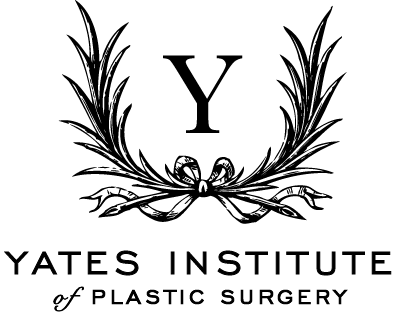Who is a good candidate for eyelid surgery?
Drooping eyelids are a common aesthetic problem, especially in older people, but they can even affect the everyday life of younger people by blocking their visual field. Therefore, it is not surprising that every year, tens of thousands of men and women around the world choose to undergo blepharoplasty, a surgery aimed to lift droopy eyelids. This procedure will improve the aesthetic appearance of the eye area.
What is blepharoplasty, and how does it work?
Blepharoplasty is a surgical procedure aiming to correct the upper and lower eyelids, with minor risks if performed by an experienced surgeon. Through this intervention, the youthful aspect of the periorbital area can be restored.
The procedure removes or restores the excess skin, fat, and muscles and also repositions the upper eyelid, in cases of ptosis of the eyelids, lifting the lower eyelids and the central facial region.
For outstanding aesthetic results, eyelid surgery can be combined with facelift procedures performed on the face and forehead.
Types of Blepharoplasty
Depending on the treated area, blepharoplasty can be superior (upper) or inferior (lower).
Superior blepharoplasty
Upper blepharoplasty surgery addresses excess skin and fat and can also raise the position of a lowered eyelid due to weakening and increased laxity of the aponeurosis of the eyelid lifting muscle.
It is very important that the technique is chosen correctly for the patient, and the amount of fat that is removed is not too much because it can produce the appearance of eyes clogged in orbit, which is not at all aesthetic.
Inferior blepharoplasty
This procedure corrects the excess fat in the three compartments of the eye by removing a quantity or positioning it over the tear duct after being modeled by dis-inserting the orbital-malar ligament.
Young patients who have a clogged tear duct but no fat deposits, loose skin, or weakened eyelids do not need surgery. In their case, a filling with hyaluronic acid or fat may be the ideal solution. The procedure must be performed with great care and only by experienced doctors because fat can cause discomfort if it is not processed and injected properly.
For elderly patients with excess skin, considerable fat deposits in the three compartments of the lower eyelid septum, clogged tear duct, or low tone of the lateral edge of the eyelid, extensive lower blepharoplasty is needed. This involves the following:
the insertion of the orbital-malar ligament is detached,
repositioning and transfer of the excess fat over the lower edge of the orbit,
the lateral edge is strengthened by canthopexy / lateral canthoplasty
the malar region can be raised by suspending the orbicular muscle in the temporal fascia or by anchoring it to the orbit.
How is Blepharoplasty surgery performed?
1. Before blepharoplasty surgery
For starters, extensive consultation is needed, in which the patient can find out as many details as possible about the surgery, the post-surgery period, and the risks. The technique must be chosen correctly, both for modeling the upper eyelids and for the lower ones.
These cosmetic eyelid surgeries are very delicate, and the patient needs to be able to follow the post-surgery regimen.
Perfection cannot be achieved even with the best results obtained, but the appearance of the face and periorbital area can be considerably improved, reducing the aging process by several years.
At the consultation, you will need to present a history of personal and family illness and a set of blood tests to show if there is an infection, inflammation, or clotting disorder.
The patient must follow these recommendations:
To have an ophthalmological check before the intervention
To undertake the recommended laboratory tests, which will be evaluated by your doctor
To quit smoking
Do not take aspirin or anti-inflammatory drugs, or natural food supplements before surgery, as there is an increased risk of bleeding during surgery.
2. The surgery
In addition to removing the actual skin of the upper eyelid, additional procedures can be practiced, such as:
removing a portion of the nasal compartment fat or transposing it to the central compartment,
shaping or contouring of the fat under the eyebrow,
prevention of fat ptosis under the eyebrow through a brazier suture made by anchoring the orbicular muscle to the periosteum of the marginal arch,
repositioning as needed below the edge of the orbit, of the lacrimal gland in case it is ptosis, or
correction of eyelid ptosis when it falls.
3. After surgery
After surgery, both eyes will be bandaged. The pain is minimal and disappears when a regular painkiller is given. It will be necessary to maintain an upright position, with the head up and ice at eye level for the first 24-48 hours, to reduce bleeding, bruising, and Edema of the area. These effects may last for up to 2 to 4 weeks and can be minimized with the help of ice and anti-inflammatory drugs, and special gels. A broad spectrum of antibiotic treatment is recommended for seven days, combined with painkillers for pain control.
The sutures can be of a separate or continuous type and will be removed 4-7 days after surgery.
Who is a good candidate for Blepharoplasty surgery?
During cosmetic eyelid lifting surgery, excess skin, fat, and muscle can be removed or shaped from the upper eyelid. Thus, blepharoplasty can treat the following problems in patients that have:
Ptosis of the eyelid
Excess skin that creates creases or covers the natural contour of the eye, sometimes preventing normal vision
Excess skin on the lower eyelid ("bags")
Excess adipose tissue in the eyelids.
Final Words
Tear grooves (circles) are often accentuated due to hereditary factors, stress, smoking, or general dehydration of the body. Dark circles can be deep in both young and adult ages, and the aesthetic aspect diminishes even more if fat bags are present under the eyes. Both problems can be solved by lower blepharoplasty.
The appearance of deep circles is given by the retraction at the level of the dermis of the malar orbit ligament, which is often very large and produces a clogging of the skin of the tear duct. Surgery can repair the drooping eyelids, but also the appearance of the "swollen" lower eyelid, which leaves the impression of a person being more tired or older than he or she really is.
In addition to this blockage, many patients also have a dark blue coloration (hyperpigmentation) of the skin of the lower eyelids. This coloration cannot be corrected by surgery. It can only be corrected by mesotherapy treatments, chemical peels, CO2 lasers, or skin depigmentation.
Please note that blepharoplasty does not treat wrinkles at the edge of the eyes, skin pigmentation around the eyes, or "fallen" eyebrows. Additional surgery will be necessary for these problems.


